How many days a year do you celebrate as a woman?
Women’s Day is celebrated every year on 8 March and is a day dedicated to women’s rights,
but also the achievements of women in the world.
If anything, this day is full of emotions as we celebrate the women in our lives,
and we recognise their successes, such as the right to vote, but also gender equality in the workplace.
But Women’s Day is not just a day for celebration and festivities,
but to make us aware of the problems faced by many women worldwide!
On the one hand, Women’s Day is a joyous celebration,
is an opportunity to focus on women who have achieved great things and to get inspired!
It is a day to recognise the role that women play in the family, the economy and society.
Most of all, it is an opportunity to express our love and appreciation to the women we love.
Women who marked history with their work!
Princess Diana
The English Princess Diana (Princess of Wales from 1981 to 1996),
was an iconic figure of the last twenty years of the 20th century.
She was the epitome of feminine beauty, glamour and elegance, while being admired for her pioneering charity work, particularly for AIDS patients and her support for the campaign to ban landmines for staff.
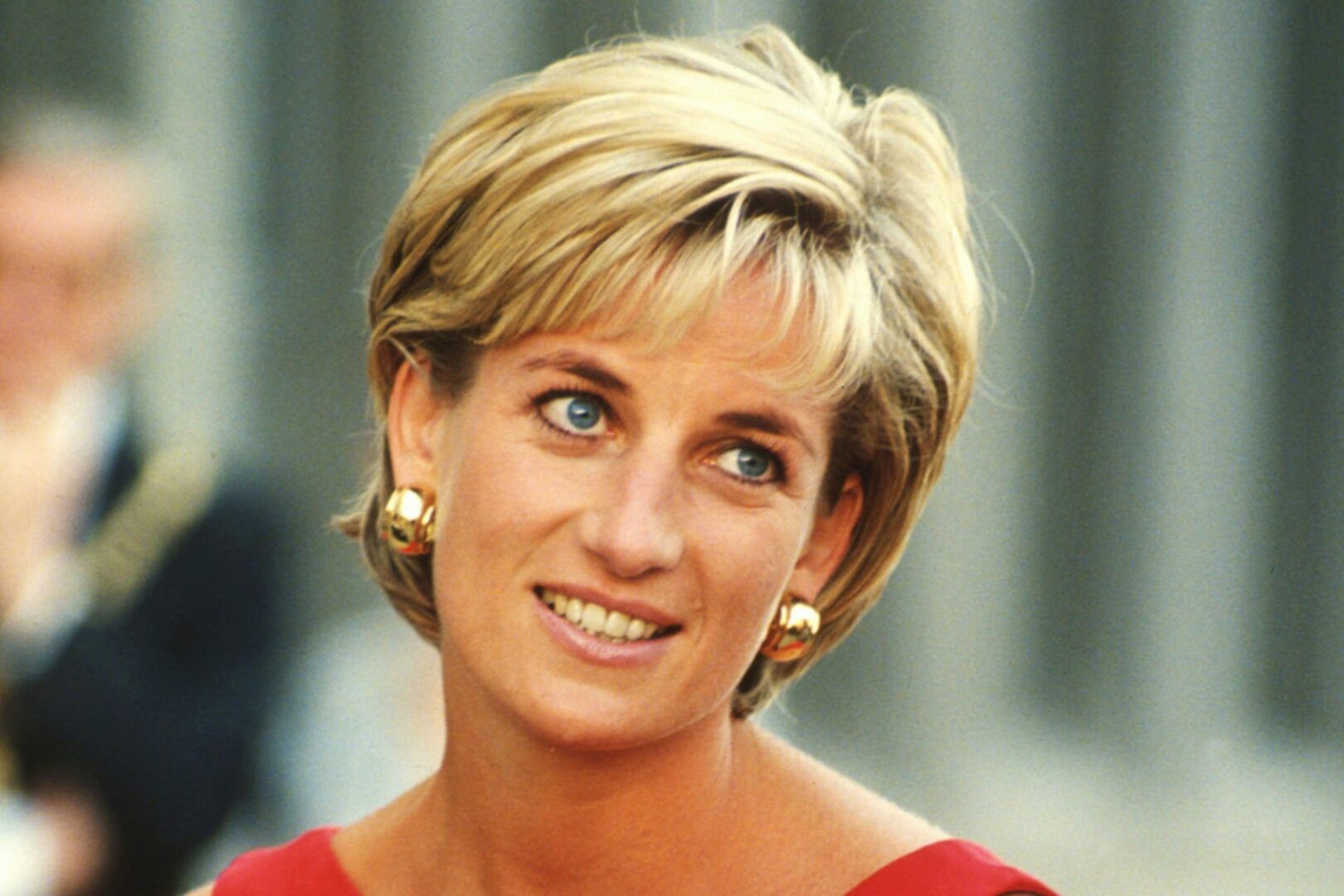
She married the heir to the British throne, Prince Charles, in 1981 and received the title of Princess of Wales.
With Charles, she had two children, Prince William and Prince Harry.
Her unexpected death, which gave rise to dozens of conspiracy theories, further enhanced her fame.

Childhood
Diana attended public school and was distinguished for her athletic achievements, particularly in swimming.
She aspired to be a ballerina, but was considered too tall.
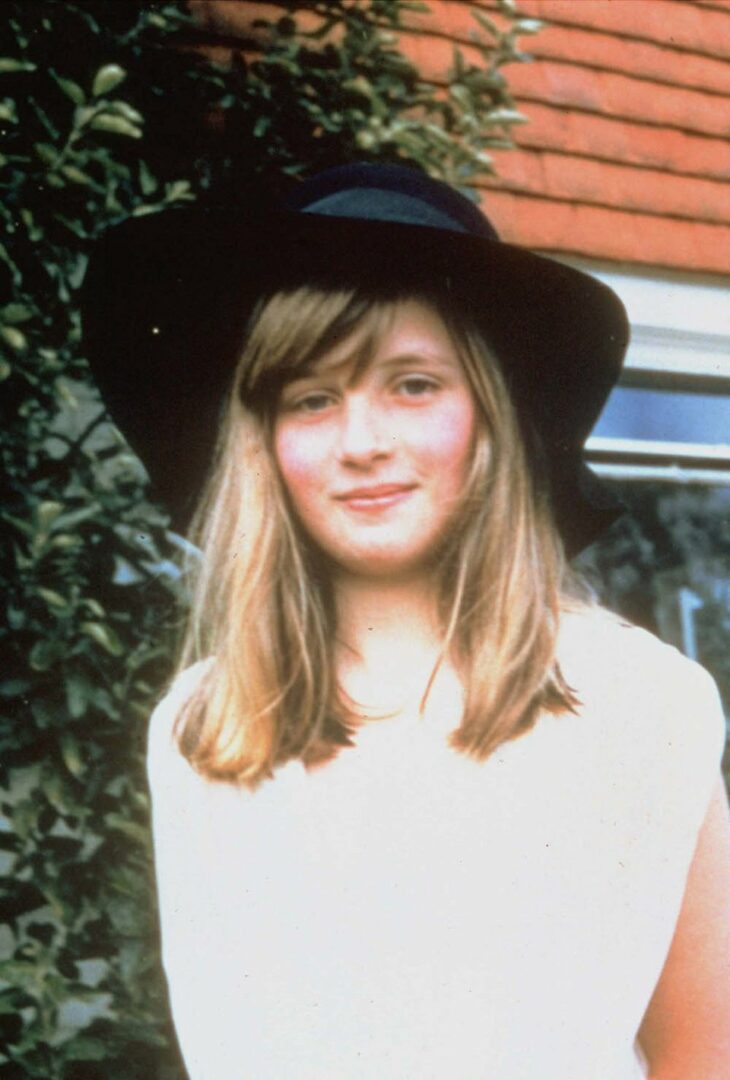
Her meeting with Charles and their marriage
Diana first met Charles, Prince of Wales in November 1977 when she was 16 years old.
Charles was a couple with her older sister, Lady Sarah.
Both were guests one weekend in the country in the summer of 1980, when Diana watched him play polo
and Charles took a serious interest in her as a possible bride.
Their relationship continued when he invited her for a weekend of sailing aboard the royal yacht Britannia.
This was followed by an invitation to Balmoral (the royal family’s residence in Scotland) for a weekend in November 1980 for Diana to meet the royal family.
Her wedding to the Prince of Wales took place on 29 July 1981, at St Paul’s Cathedral in London and was broadcast on
on television to 750 million people worldwide.
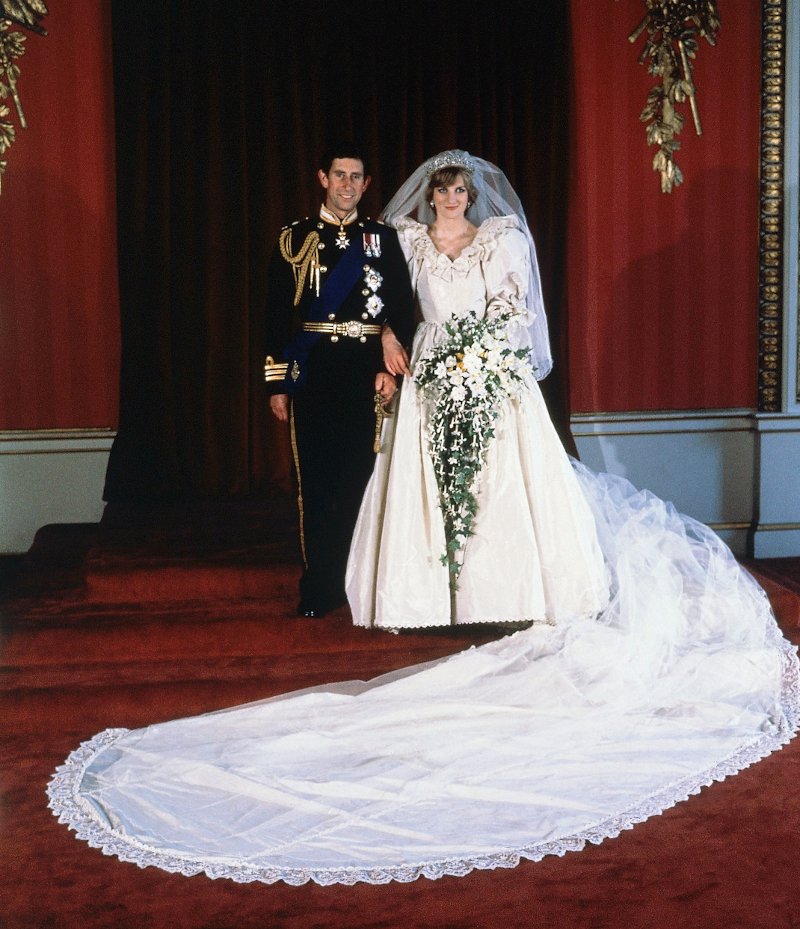
The unexpected death
One evening on August 31, 1997, Diana and her then partner Dodi Al Fayed, with driver Henri Paul
and Al Fayed‘s bodyguard, Trevor Reece Jones, were put into a Mercedes-Benz S280,
while dozens of paparazzi chased them for a photo.
The driver, in his attempt to escape the chase of the paparazzi, entered the “Pont de l Alma” tunnel at breakneck speed,
lost control of the car and crashed into the tunnel walls.
Both Dodi Al Fayed and the driver of the car were killed instantly.
Diana died a few hours later and the only survivor of the car crash was the bodyguard.
The official cause of death was reported as a ruptured pulmonary vein.

Diana’s funeral took place on 6 September 1997 at Westminster Abbey.
Hundreds of thousands of people took to the streets to attend the funeral service,
while 2.5 billion watched it live around the world.
Diana was buried at her family estate, Althorp, in Northamptonshire.
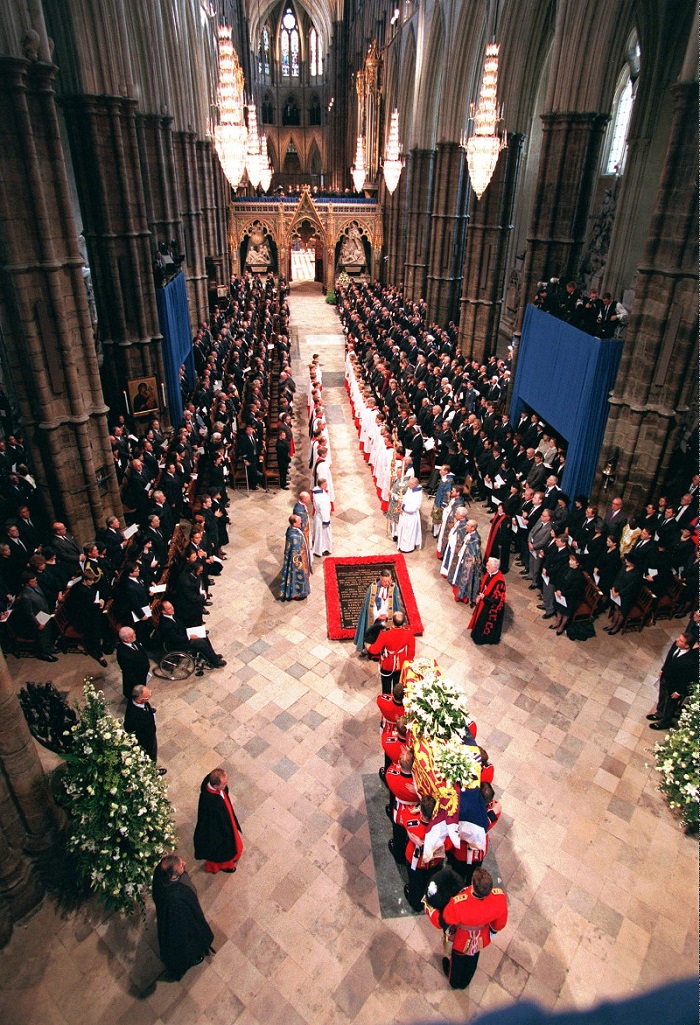
Melina Mercouri
1955 was the landmark year of her career and life: She starred in her first film, Stella.
The film competed at the Cannes Film Festival and during its screening, she met and fell in love with Jules Duchamp,
with whom she stayed with until the end of her life.
Melina Mercouri was the longest serving minister of culture and the brilliance of her personality was international.
She was truly daring but also knew how to enjoy life in a way that was almost unimaginable for women of her time.

Her career as a performer
Melina Mercouri had a great career in the recording industry as more than fifteen albums have been released,
in addition to soundtracks for films and theatre performances.
He has sung great Greek composers, Manos Hadjidakis (with whom he had a personal friendship), Mikis Theodorakis,
Stavros Xarchakos, Yannis Markopoulos and Vassilis Tsitsanis.
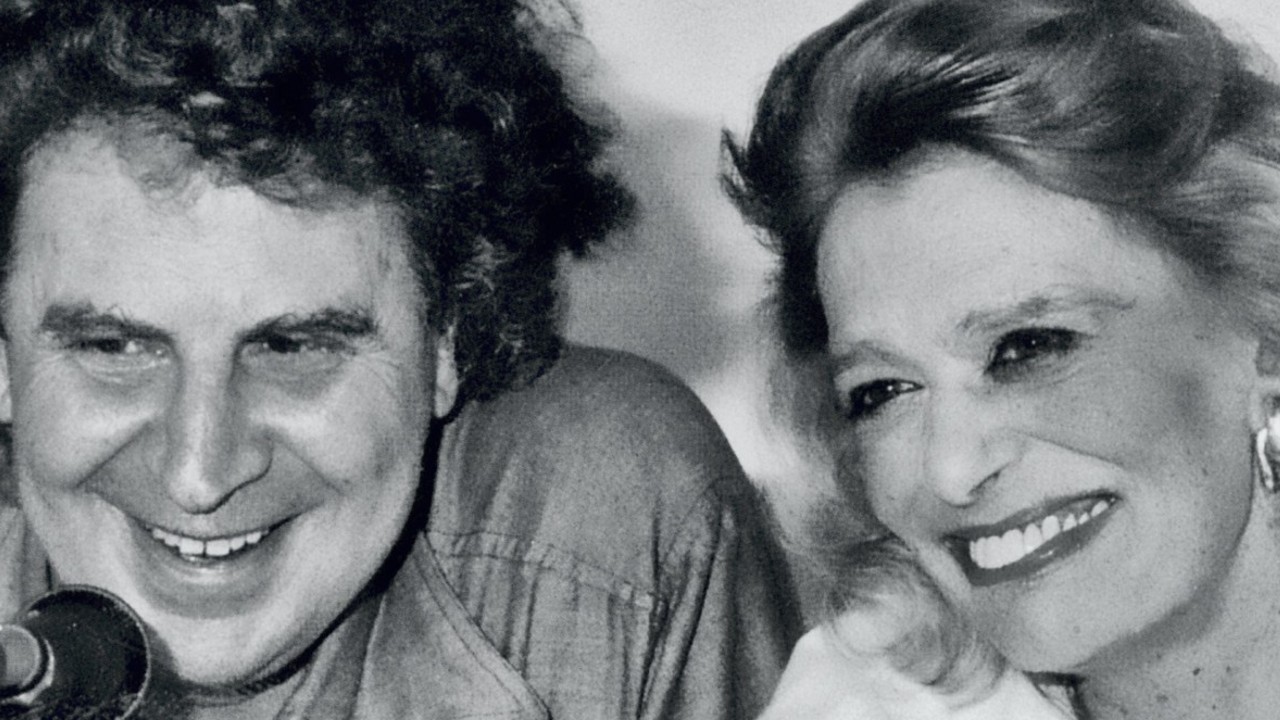
The struggle as Minister of Culture
He served as Minister of Culture from 1981-1989 and 1993-1994,
position which gave her the impetus to start a campaign for the return of the stolen marbles of the Acropolis
by Lord Elgin, which are on display at the British Museum.
In 1982 , he raised the issue of the return of the Parthenon sculptures at the UNESCO International Conference of Ministers of Culture.
“You must understand what the Parthenon Marbles mean to us,” he said.
“It’s our ambition and our name. It is the essence of our Greekness.”
And “if you ask me if I will be alive when the Parthenon Marbles return to Greece, I tell you that yes, I will be alive.
But even if I don’t live anymore, I will be reborn.”
It was also founded, at her request, by her husband Jules Dassin and with the participation of world famous personalities such as Nobel Prize-winning poet Ulysses Elytis, French politician Jacques Lang and others.
the Melina Mercouri Cultural Foundation, which aims to return the stolen Parthenon sculptures.

Her death
In her second term in the Ministry of Culture, she attaches great importance to the introduction of culture,
and drama education in schools, but overwhelmed by a long battle with cancer,
breathed her last at New York’s Memorial Hospital on Sunday, March 6, 1994.
Her body arrived in Greece on 8 March 1994 and was placed on a two-day pilgrimage in the chapel of the Metropolis of Athens, while at the same time a three-day national mourning was declared.
On Thursday 10 March 1994 , the funeral service was chanted at the Athens Cathedral and immediately afterwards hundreds of thousands of people accompanied her to the First Cemetery of Athens.
She was the first Greek woman to be buried with head of state honours.
He was buried in a family grave.
Her death has caused shock and emotion around the world.
So at the time of her funeral, the theatres and shops on Broadway are closed.
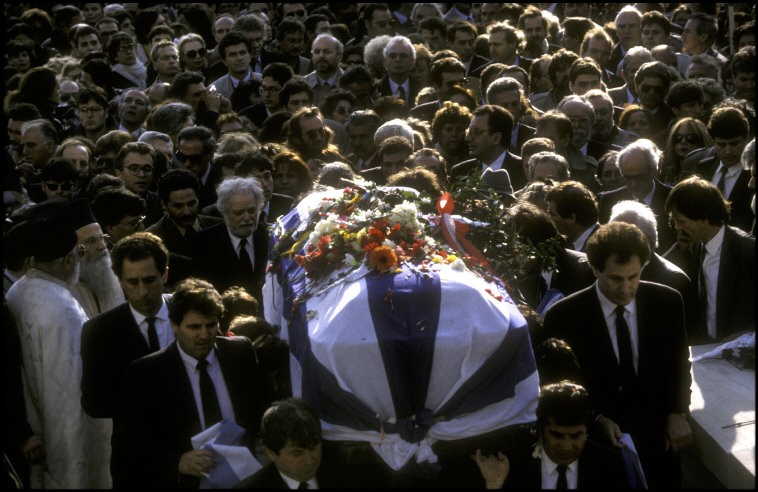
Eleni Glycatzi – Arveler
Eleni Glykatzi – Arveler (Athens, 29 August 1926),
is a Greek, Byzantinologist – historian of Asia Minor origin.
She was the first woman chair of the History Department at the University of Sorbonne in 1967,
the first woman rector of the University of Sorbonne in its 700-year history, in 1976,
but also Chancellor of the Universities of Paris.
She is also a Goodwill Ambassador for UNICEF.

A female fighter.
From the refugees of Byron, poverty, the occupation and her active participation in the resistance, to the Paris of the intellectuals
but also of political life.
The little girl, the fisherman’s daughter, who became a great woman, not only did not lose her Greekness,
but elevated it to what it has always been in cosmopolitanism.
A timeless ambassador of Greece.
The Paris
She moved to Paris in 1953 to continue her studies.
Two years after her arrival, she was appointed to the French National Centre for Scientific Research (CNRS)
and in 1964 she became director of studies at the Centre and in 1967 a professor at the Sorbonne.
In 1966 she received her doctorat ès lettres, with her study on Byzantium and the sea, published in
from the University Presses Universitaires de France(Byzance et la mer, Paris: Presses universitaires de France).
She was Director of the Centre for the History and Culture of Byzantium and Christian Archaeology, became Vice-Rector (1970-1973)
and in 1976, Rector at the University of Sorbonne.
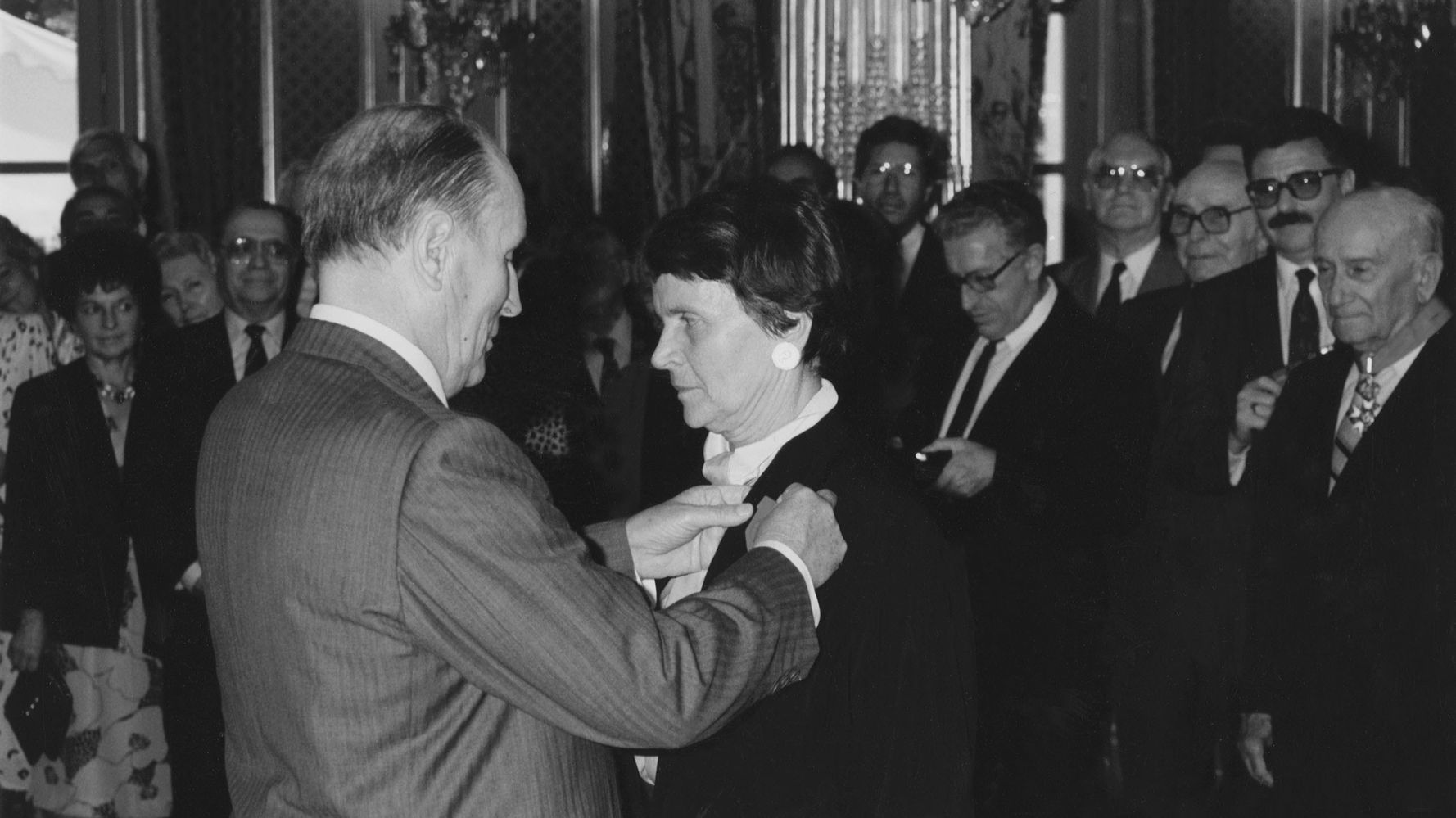
There she met her husband, Jacques Arveler, who was an officer in the French Navy,
who came from a wealthy family in Paris.
With Jacques Arveler she had a daughter, Marie-Hélène.
Today he lives permanently in France.
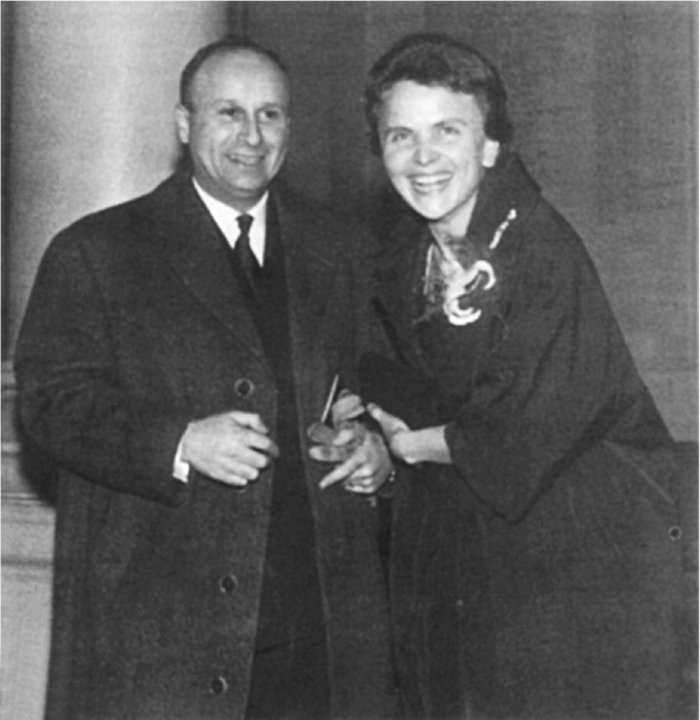
Maria Callas (Maria Sophia Anna Kaikilia Kalogeropoulou)
She was a leading Greek soprano of the 20th century.
Her vocal art and her unique acting skills were praised by numerous critics,
while the operatic public gave her the nickname La Divina.
He was born in Manhattan, New York to Greek immigrants in America,
was the daughter of the pharmacist George Kalogeropoulos from Meligalas, Messinia
and Evangelia (Litsas) Dimitriadis, from Stylida in Fthiotis.
In 1937 she settled with her mother and older sister in Athens, after the divorce of her parents.
and enrolled in the National Conservatory.
Her first role was “Sanducha” in Maskani’s opera “Kavalearia Rusticana”, in a performance by the students of the conservatory.
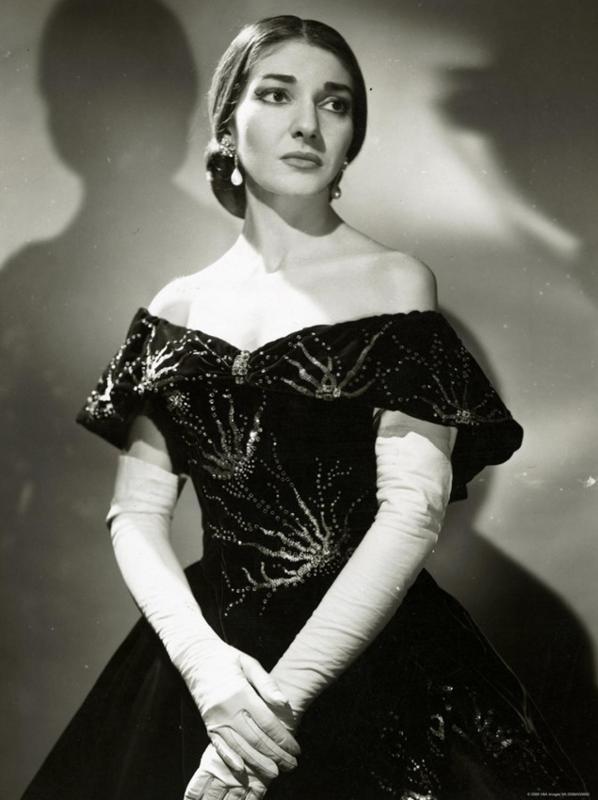
The first steps in Greece
Her official professional debut took place during the 1940-1941 season of the National Opera House,
in the small role of Beatrice in Franz von Schupe’s operetta Boccaccio.
She took on her first leading role on 27 August 1942, appearing as “Tosca” in Puccini’s opera of the same name.
In February and March 1943, he participated in the chorus of the Greek opera “The First Mastoara”.
with music by Manolis Kalomiris and a plot based on the play of the same name that Nikos Kazantzakis had written in 1908 – 1909 in Paris.
In July 1943 he starred again as “Tosca” at the Summer Theatre of Klathmonos Square.
In the spring of 1944, Callas reappeared as “Sanducha” in Cavaleria Rusticana at the Olympia Theatre,
this time being a professional soprano.
In the new production of Protomastoras, which was staged at the Herodes Atticus Conservatory in July 1944,
the monodactress took the leading role.
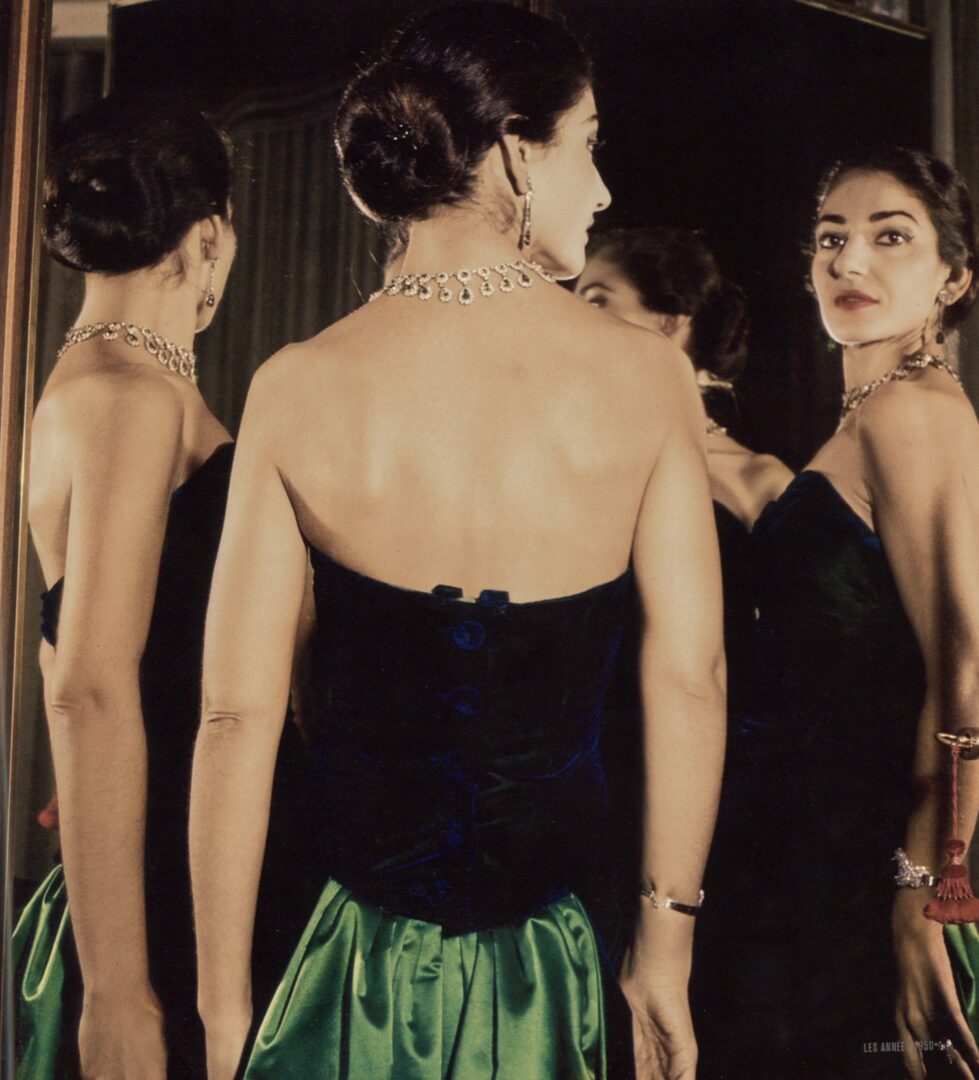
Back to America
In September 1945 she returned to her hometown, where her father lived, to further her international career,
changing her last name to Callas.
Although she remained unemployed until 1947, she did not give up after a successful audition,
she was commissioned to sing “Gioconda” in Amilcare Ponchielli’s opera of the same name at the Arena in Verona,
one of the most important lyrical spaces in Italy.
Although she slipped in the general test and twisted her ankle, she managed to successfully take the first important step
of her career on August 2, 1947.
Italy and meeting Gianbatista Meneghini
The conductor of the performance was the famous Tullio Serafin, who admired her voice and became her teacher,
expanding its technical and interpretive horizons.
But Verona was also home to the industrialist Gianbatista Meneghini, who adored her, not only as an artist but also as a woman.
So, on 21 April 1949, Callas married him, even though she was twice her age,
perhaps to make up emotionally for the absence of the father figure, as written.
With Meneghini’s help, Callas’s career took off in dramatic roles in both high-pitched and dramatic coloratura.
In 1951 she also performed the “La Scala” in Milan (the lair of her great rival Renata Tebaldi), with Verdi’s Sicilian Vespers. So in 1954, the girthy Callas underwent dietary treatment to lose weight and be able to embody her roles,
not only with her voice, but also with her appearance.
In July 1965 Callas participated for the last time in a stage presentation of an opera, starring as Tosca
in a successful production at the Royal Opera House in London, directed by Franco Geffirelli.
Quite earlier, personal-emotional reasons, but also vocal health, had led to the gradual thinning of her performances.
In these rarer performances, certain technical problems that her voice had acquired became more apparent,
with speculation as to their causes mounting.
After 1965, Callas did not sing in public again for eight years.
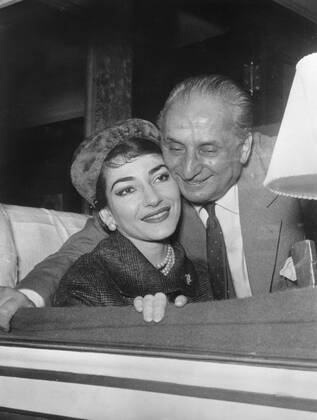
The relationship with Onassis
In September 1957, at a party that she herself had organized, the cosmographer Elsa Maxwell
introduced Callas to the Greek shipowner and businessman Aristotle Onassis.
In time, their acquaintance developed into a much-discussed relationship.
In 1959, after ten years of marriage, Callas left Meneghini.
Despite her possible vision of marrying Onassis or, at least, living together exclusively, their relationship,
at least the romantic one, ended two years later in 1968 when he left her in hexapine to marry
in October of that year, Jackie Kennedy, widow of assassinated US President John F. Kennedy.
However, according to journalistic sources of the time, the two continued to meet in Paris and maintained a certain relationship.
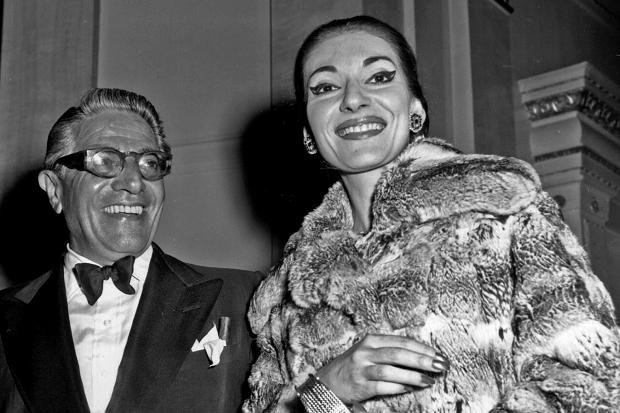
Her death
Maria Callas locked herself in her apartment in Paris but also herself.
The great diva passed away on the morning of 16 September 1977 from a heart attack at the age of 54.
Her funeral took place on 20 September 1977 at the Greek Orthodox Cathedral of St. Stephen in Paris.
According to Callas’ acquaintance, pianist Vaso Devetzi, her wish was to be cremated
and furthermore its ashes to be scattered in the Aegean Sea.
However, there was no formal or informal record of this wish, so its authenticity is questionable.
Indeed, according to other people close to her, cremation was contrary to her religious and moral beliefs.
Nevertheless, her body was cremated in the Cemetery of Per-Lassaiz, the largest in metropolitan Paris.
Two years later, in June 1979, after a short ceremony, the then Minister of Culture Dimitris Niannias
scattered its ashes from a rocket ship floating in the Saronic Gulf.

Rena Vlachopoulou
Rena Vlachopoulou was born in Corfu.
Her father, Yannis Vlachopoulos, belonged to the aristocracy of the island, while her mother, Kalliopi,
was the daughter of a maid who worked in the Vlachopulos’ house.
Her parents loved her and despite the opposition of the young man’s family, who disowned him, they married and had nine children.
They were barely getting by.
Rena was the fifth child and she often went with her father to the mansion of Monte Theotokis, where there was a piano,
but also a discotheque with 78 rpm records.
It was there that she had her first contact with music and singing.

The first steps
At the age of sixteen he sang for the first time in a Spianada bakery,
where in 1938 he met and fell in love with the football player of A.E.K. Kostas Vasileiou.
Together they moved to Athens, where they married in the summer of 1939.

The same year at the variety show “Oasis” at Zappeion, where Mimis Traiforos presented young artists,
Rena tested her singing skills.
She impressed Traiphorus, who asked her to sing there permanently.
Indeed the next day he went to sing at the vaudeville the next day wearing a borrowed toilet, which he stepped on and fell down.
She scored a success singing “Little Peasant Girl”, the Italian song Reginella Campagnola by Eldo di Lazzaro
adapted into Greek by Paul Menestrell.
A few months later, during the Greek-Italian War, the song was again covered by George Economidis.
and is even more successful as “The Mussolini Sucker“.
He then appears at the Montial Theatre of Makedos on Panepistimiou Street in a revue with Sophia Vembo,
the Kalouta sisters, Manos Filippidis, Iro Chanta, Mimis Kokkini and Georgia Vassiliadou.
At the same time he starts to record gramophone records in Odeon.
In 1940, a few days after the declaration of war, the Italians bombed Corfu.
Then both her parents are killed.
She divorces Vassiliou and in 1943 she marries the banker Yannis Kostopoulos.

The “Queen of Jazz”
Then she starts collaborating at the “Pantheon” with the composer Yannis Spartakos, who writes jazz songs for her, which were a great success.
Because of this, the press called her “the queen of jazz”.
The song I’ll take you away, which he first sang at the Cinema News on Stadium Street and later,
in the autumn of 1944 in the Welcome revue by Sakellariou-Evaggelidis at the Kyveli Theatre, crossed the Greek borders.
They worked with Spartacus for several years.
In 1946 she divorces Kostopoulos.
Film debut
In 1956 she made her film debut, playing alongside Nikos Rizos and Stefanos Stratigio,
in the first color Greek film “Capital Adventures” by Yannis Petropoulakis.
A milestone in her career was in 1962, when she participated in Manos Hadjidakis’ “Odos Odiro Oreiro”,
at the “Metropolitan” theatre, became a reason for Yannis Dalianidis to notice her and make her the leading actress of the musical
“Some like it cold” (1963).
In fact, Finos himself, when he heard her sing, allegedly suggested that she sign a lifetime contract with his company,
with which he filmed some of the greatest hits of Greek cinema.
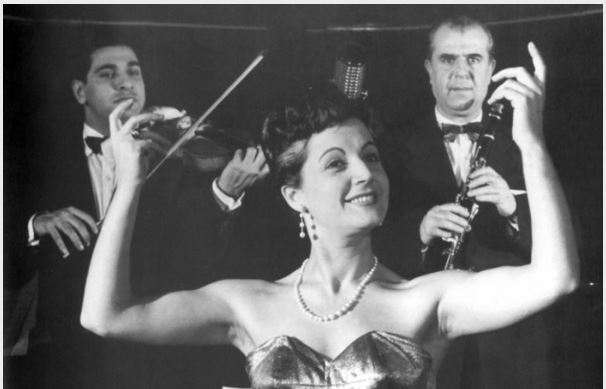
Some of Rena Vlachopoulou’s movies that stand out
“Something to Burn” (1963), “A Girl for Two” (1963), “The Gambler” (1964), “Girls for Kissing” (1965), “The Thief Cries” (1965), “The Congresswoman” (1966), “Dating in the Air” (1966), “Viva Rena” (1967), “The Jealous Woman” (1968), “The Parisienne” (1969), “My Aunt the Hippie” (1970), “A Mad, Mad Forty” (1970), “A Groom is Urgently Wanted” (1971), “A Greek in the Harem” (1971), “Rena is Offside” (1972), “The Countess of Corfu” (1972).
In 1976 he began a career in television, starring in the television series of Alekos Sakelarios
“An Athenian in Athens”, while her last appearances on the small screen were “Mama Mia” and “Yes, Sir”,
in 1988 Vlahopoulou suffered a gastro-bleed.
The gradual decline of her career began, as she would no longer be as explosive and tough as she had been known until then
and he’d be singing playback by now.
In addition, during the winter season he performed at the Rex Music Theatre in Athens in a nightly musical program,
accompanied by Dimitris Mitropano, Glykeria, Yannis Miliokas and the composer Christos Nikolopoulos.

The third marriage
On 18 September 1967 she married the businessman George Lafazanis.
Their wedding took place in the Metropolis of Athens and was one of the biggest secular events of the year.
She and Lafazanis lived in love until her death.
But she never had children from any of her marriages.

Her death
He passed away at 7 pm on Thursday 29 July 2004 at the Athens Medical Center.
He had been admitted to the Medical Centre on 16 July for surgery, having suffered a perforated stomach.
The medical statement listed the cause of death as cardiac arrest.
On 30 July 2004 her body was exposed in a popular pilgrimage at the chapel of St. Lazarus of the 1st Cemetery of Athens. Her funeral was held at public expense on Saturday 31 July 2004 at the A’ Cemetery of Athens
accompanied by the band of the Philharmonic Society “Mantzaros” that came from Corfu,
in the presence of many of her colleagues and the general public.
On the day of her funeral all shops in Corfu remained closed as a sign of mourning.
In September 2016 Rena Vlachopoulou’s luxurious house in Dassia area of Corfu was sold to a
Greek construction company in order to be renovated and rented.
She still has the title of the last Countess of Corfu.
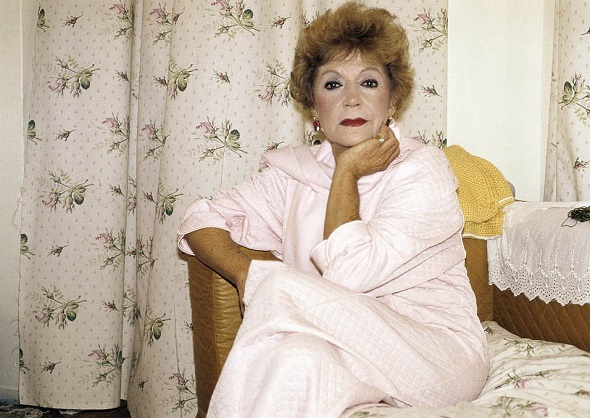
And the ones that didn’t make it…
But on the other hand, Women’s Day is also a day to become aware of the difficulties,
but also the injustices faced by many women around the world.
Although many steps have been taken towards gender equality, the truth is that,
many women still face discrimination and abuse.
So after we have seen women who inspired at the end of their lives, it’s time to see the women who didn’t..
And of course, it’s time to talk about gender-based violence and its victims!
The term femicide was not suddenly invented as part of a communication game.
It is a term, which was created like any other word, to describe something very specific
and first used in England in 1801.
In particular, this term was used to describe the killing of women and females by men because they are women.
And somewhere here it is time to mention also five murders of women by husbands-partners (ex-partners),
made in Greece alone, from 2021 to 2023, where this number is only part of the grim reality we live in!
Chania 17/1/2021
On 17 January, 54-year-old Vasiliki was found dead in a pool of blood in Meskla, Chania.
The perpetrator was her 48-year-old Norwegian partner.
He murdered her with 14 stab wounds.

Makrinitsa 5/4/2021
On April 5, 28-year-old Constantina and her brother die tragically in their family home in Makrinitsa,
by her 31-year-old ex-husband, who could not accept their separation.
He violated a restraining order and took the lives of two people and almost took the lives of their mother.

Freshwater 11/5/2021
The murder of 20-year-old Caroline Crouch in Sweetwater on May 11 by her 32-year-old husband,
presence of the 11-month-old infant of the family, shocked the nation, which for more than five weeks
had identified with the pain of a husband and father.
The perpetrator had staged the alleged invasion of the house by robbers and for these purposes he took the life of the family dog, while he was acting for 37 days, when he was forced to confess.

Thessaloniki 2/3/2022
On the evening of March 2, 41-year-old Vicky, owner of a tsipouradika in Thessaloniki
falls dead before the eyes of her children.
So her boxing partner enters the business and searches for her.
He then pulls out his gun and shoots her.
The woman is fatally injured.
The man with the same gun ends his life.
The 41-year-old offender was a boxer and often caused problems for his ex-partner.
For this reason, in January 2021, he had moved for an injunction against the perpetrator.
The couple had been together for about three years, but after the breakup the boxer did not stop bothering her.

Nice 22/1/2023
The 50-year-old husband of the victim, but also the perpetrator of the murder appears to have choked with his own hands,
the 54-year-old woman before calling the authorities, while she had also previously concerned the authorities for incidents of domestic violence .
In fact, they also had a minor daughter, 12 years old, who was not at home at the time of the tragedy but in Salamina with her grandmother.
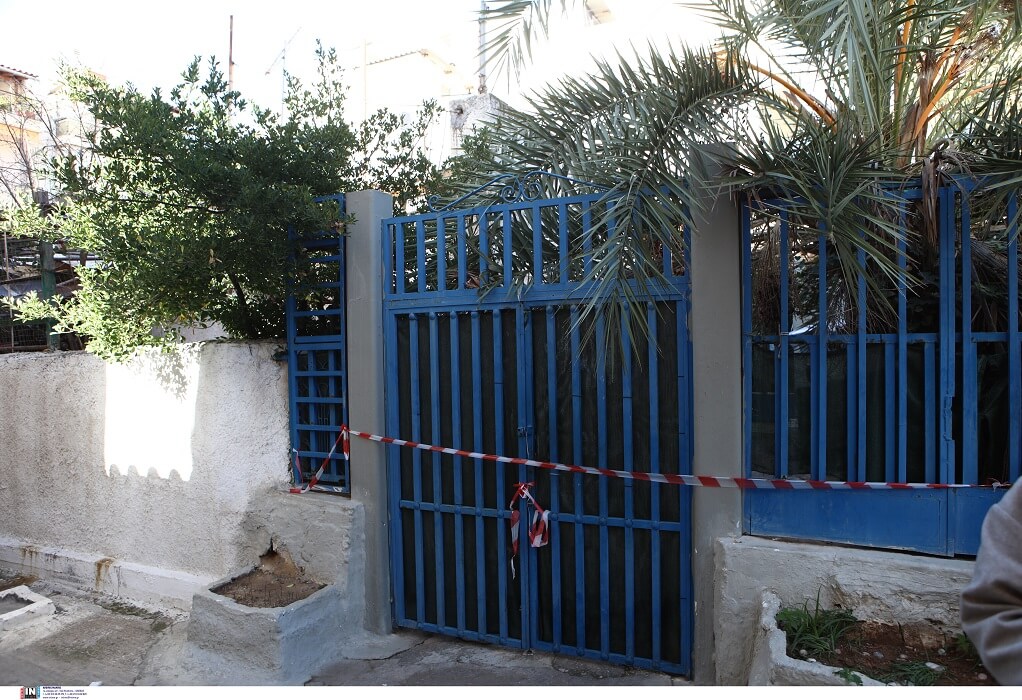
All these cases are therefore a small sample of the women who have gone missing in the last three years,
at the hands of people who once thought they could make them happy.
If you haven’t read the statistics in our previous article, click here.
So happy birthday to every woman on this planet who is made to feel unique because she is…
But also happy birthday to the woman who has lost faith in herself, feels trapped and that she is to blame for everything that happens to her!
Give the gift to yourself, see the uniqueness in everything that makes you you, just as you are
and throw away anything that’s blocking you and giving you bad thoughts!
So enjoy all the women in your life, love them and embrace them, every day and a little tighter..
Besides… nobody died for love!

